We truly hope that the title of this doesn’t sound like an oxymoron to you. While many of us cannot eat ‘bread’ due to a gluten allergy, and many of us choose not to eat bread because carbs are “evil” or whatever your opinion may be doesn’t mean that this beloved food isn’t an option for everyone.


Besides, the gluten-free market is growing, and honestly… some brands and recipes make it impossible to tell you aren’t biting into a crusty slice of yeast and flour. This is a good thing, especially for celiacs.
If you’ve learned one thing about label-reading, though, we know that gluten-free isn’t the end-all, be-all. This term has become a bit of a buzzword, and we can’t trust every tempting loaf that deems their label synonymous with health.
In fact, we’re talking beyond gluten-free today.
What are the “healthiest” breads? Let’s take a look at the best decisions you can make if that sandwich or morning toast is calling your name.
Why we’re weary of white
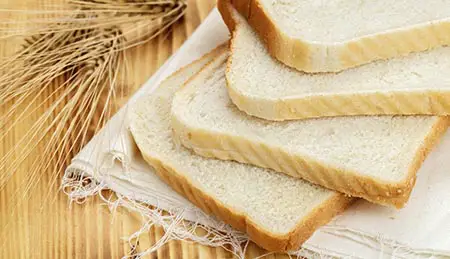

Before we go spouting off the health benefits of this bread and that flour, we want you to understand compared to what exactly. White flour has a bad rap, and it’s mostly because it’s so commonly discovered in packaged, processed, unhealthy foods.
Cakes, cookies and Wonderbread… there’s nothing nourishing about these things, especially if they’re wrapped in plastic.
Over the years, it’s been said that we should avoid most white foods – flour, sugar, rice, and the like. As a rule of thumb, this isn’t a bad one, but we should delve into understanding why we’re following these standards.
- It’s a simple carbohydrate. When it comes to your starchy cravings, it’s best to aim towards complex carbohydrates which are more easily digested by the body. The “good” carbs digest slowly which helps the body use the energy they provide properly, absorb the nutrients present in the food, and avoid issues with blood sugar.
- It’s devoid of nutrients. In order to produce white bread (or white rice), the bran and germ are removed from the grain. All that’s left is the endosperm aka the carbohydrate portion, making white flour pretty lackluster in the vitamins and minerals department.
- White bread is a processed food. All in all, bread (especially store-bought) is a processed food. They take out the nutrients and add them back in, there’s a whole lot of added sugar in the fine print of these labels, and other additives, stabilisers and refined oils have a way of finding their way into these packages too. It’s best to avoid the trouble.
The bottom line: There are tons of options that fare better than white flour when it comes to choosing the healthiest bread. The alternatives are far more digestible and nutritious.
Wholegrain isn’t always best
If you peruse general nutrition guidelines often mandated by the government, you’re no stranger to the notion that wholegrain trumps all. As a matter of fact, it’s often thought of as a necessary addition to a healthy diet.
Well, let’s clear one thing up first – it’s not. Of course, it can be, but you’re going to survive without whole-wheat or whole-grain bread.
Like the gluten-free label, a whole-wheat label is there to tell the consumer off the bat that this bread is healthy. You shouldn’t judge a book by its cover, though.
If you’re purchasing bread at the store, you should at least read the back cover, because you might find some not-so-healthy ingredients hiding out. You might think that any whole-wheat bread is primarily made with whole-wheat flour, but there you could be wrong.
Oftentimes, the main ingredient is enriched wheat flour making these choices white bread with some whole-wheat in there somewhere. Not ideal! Don’t get us started on added sugar…


Watch out for the following labels, which can be highly deceptive. These labels do not mean the product is healthy OR 100% whole-wheat/whole-grain.
- Multi-grain
- Bran
- Organic
- 100% wheat
- Organic
- Unbleached
- Enriched
Explore your alternatives
Beyond both whole-wheat and gluten-free claims, there is a world of ingredients to make bread with. These ingredients may or may not be familiar to you, but it’s worth exploring your options to best suit your diet and focus on real food.
That’s always the objective, isn’t it? Here are a few of the healthiest bread choices you can make.
Sourdough
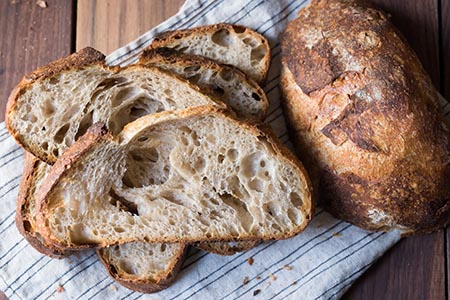

If we’re focusing on ancestral health, sourdough is likely the best option. It’s a truly nutritious food. While it’s typically not gluten-free, it does have one HUGE advantage: sourdough is a fermented food.
You know how much we love that good bacteria!
Sourdough often has a lower glycemic index making it friendly to diabetics or those watching carb intake. The bacteria aids the body in digestion which makes sourdough a viable option to those who avoid wheat due to tummy troubles.
Lactic acid (found in the bacteria Lactobacillus) means less phytic acid which compromises the bioavailability of nutrients in the body.
Making sourdough at homes ensures that you get all the benefits due to fermentation and soaking of the grains. While all the prep is a labour of love, these steps help break down the proteins found in gluten, making it a good choice for those who are sensitive to the stuff (not allergic) and those who seek a happy gut.
A genuine loaf of sourdough contains a variety of vitamins and minerals that are seldom found in white bread without enrichment. Finally, crafting sourdough is an ancient art.
It is the oldest form of leavened bread, and our ancestors have been doing this for a long time, so we can trust it… right?
Bottom line: If you can handle gluten, sourdough is king. Here is a thorough how-to guide from The Clever Carrot to get started with your own homemade sourdough.
Buckwheat


Buckwheat is a pseudograin that is inherently gluten-free, so it’s suitable for those with allergies or severe intolerances to wheat flour. It’s commonly used to make crepes, or you might be familiar if you eat soba noodles.
- It contains fair amounts of the minerals manganese, copper, magnesium and phosphorous.
- Buckwheat has been shown to help lower inflammation which wheat can exacerbate.
- When prepared properly, this plant protein is highly digestible due to its amino acids profile.
Kamut
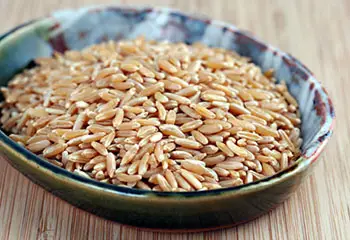

This grain is also known as Khorasan wheat and it is not gluten-free, but it does boast some serious nutritional benefits compared to white flour. Oh, and most importantly, you can make bread out of it.
- One cup of cooked kamut contains 10 grams of protein.
- A serving of kamut has 100% of the daily recommendation for manganese.
- This grain contains all the selenium you need for the day.
- Its slightly nutty flavour offers up a tasty and versatile loaf of bread.
Pumpernickel & rye breads
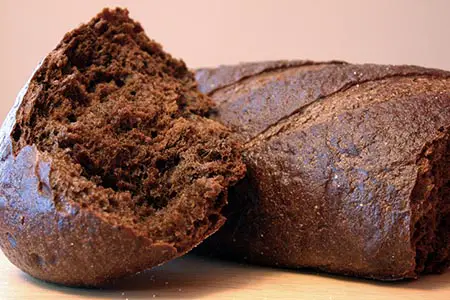

Pumpernickel’s rich hue has it stand out amongst the rest, and if you’ve ever tasted the stuff, you know it’s got unique properties beyond what the eye can see. Turns out, it’s a smidge more nutritious than your average white bread, too.
A true pumpernickel loaf is made from wholegrain rye flour, so it does fall into our first category. It’s also oftentimes fermented with a sourdough starter which lends it many of the same benefits as the “cream of the crop” bread including a low glycemic load. This makes it a fairly healthy choice of starch in the diet.
Speaking of starch, the average loaf of pumpernickel or rye contains eight times the amount of resistant starch (i.e. good carbs) as wheat breads, so it’s quite superior.
This helps the carbohydrates digest slowly, which helps you to avoid a big blood sugar rise and crash.
The bottom line: Like sourdough, you should seek out authentic pumpernickel and rye breads prepared properly. The best way to do that? Make it at home! Try this recipe from The Bread She Bakes.
The scoop on sprouted grains
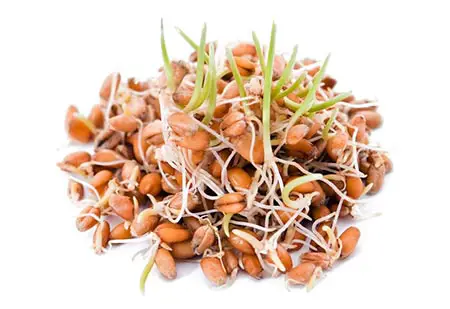

Finally, it’s worth mentioning that preparation technique is just as important – if not more important – as what grains we’re using to bake these healthier-for-you loaves of bread.
Like nuts and seeds, soaking and sprouting your can make all the difference. Here’s why.
- Sprouting decreases gluten proteins making the grains used in the process more easily tolerated by people with sensitivities.
- Sprouting wheat can increase folate which is linked to better sexual function in men and neurological support.
- Sprouting grains increases digestibility because it converts carbohydrates into simple sugars which are easily used by the body.
- The sprouting process increases absorption of minerals because it breaks down enzyme inhibitors.
- Sprouted grains often contain more protein and fibre leading to better satiety, less impact on blood sugar, and a lower carbohydrate content.
The bottom line: Sprouted grain breads are becoming more and more popular at the grocery store. If you tolerate gluten and other grains well, this is one of the healthiest choices you can make without DIY’ing it. Look out for additives, refined oils and sugar just as you would with white bread or whole-wheat options.
Going against the grain
There are a few options for those of you who avoid both gluten and grains. If you’re following a strict paleo diet, are aiming for weight loss, or simply doing an elimination diet to test what your body is sensitive to, it’s often recommended to cut it all out.
This doesn’t mean you won’t miss bread. Maybe you won’t, maybe you will. If you are, here are a few possibilities.
Arrowroot
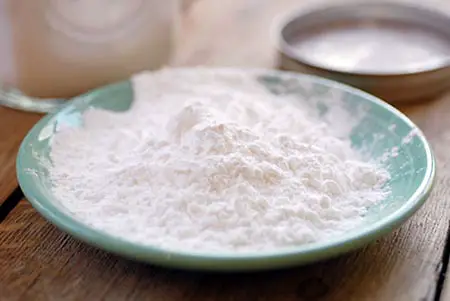

Arrowroot is a type of starch, and it’s often comparable to cornstarch. That said, you can bake with it, but the texture is a bit off-putting and unlike bread.
It can be quite moist and ‘gummy,’ so it makes a nice replacement if you’re on the hunt for dinner rolls or Italian bread loaves – something you don’t want a crumb or a crust on.
It is gluten-free and it contains plenty of folate. It also has quite a bit of potassium amongst a few other vitamins and minerals. It can reduce diarrhea, inflammation and minimise abdominal pain making it a good natural remedy for stomach problems overall.
This starch is mainly comprised of carbohydrates, so look for low-carb options below. Arrowroot starch is often used as an additional ingredient such as a food thickener, but it is often used in conjunction with other grain-free flours to perfect the texture.
If you’re looking to use it for bread, try this naan recipe from My Heart Beets.
Cassava flour
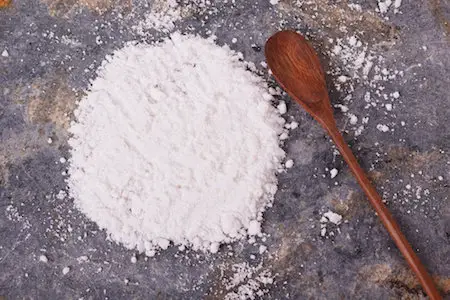

This jack of all trades might be the closest thing you get to wheat flour. Oftentimes, you can use a 1:1 ratio making the replacement pretty failproof.
It’s incredibly easy to work with and it generally results in a pretty authentic looking and tasting bread, with an unbeatable texture. Consider using cassava if you’re new to grain-free flours and bread-making.
Also called yuca (not to be confused with yucca), this tuber makes a slightly sweet flour substitute. It’s almost reminiscent of sweet potato. It’s one of the starchier starches with nearly twice the calories of potato, so keep in mind this food is quite rich.
Fortunately, that’s what we often seek in a hearty slice of bread. It is naturally gluten-free and it contains a fair amount of vitamin C.
Honorable nutrient mentions include niacin, folate, calcium, vitamin B6 and phosphorus. Fun fact: cassava cannot be eaten raw (so don’t try it!), but in some cultures, people prepare cassava by chewing the root first.
Saliva breaks down the cyanide compounds. If you get your hands on some of the flour, try this awesome French bread from Cook It Up Paleo.
Tapioca starch
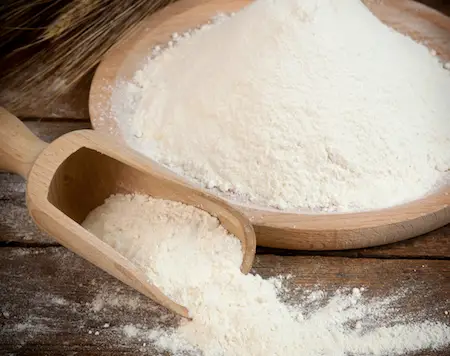

This starch is actually extracted from the cassava root, so think of it as its cousin of sorts. If you’d like to keep it in the family, this is a great gluten-free flour to get familiar with.
Tapioca thickens at a low temperature, and you end up with something quite chewy in the end. It’s great for desserts like pie and flatbreads for this reason.
Its neutral taste and ability to thicken things up a bit make it a fine alternative for both white flour and corn starch, another common allergen.
It contains some fibre, B-vitamins and “good” cholesterol. Like cassava, it’s a very dense ‘food,’ and it’s pretty carb-heavy, so consume in moderation.
Remember, tapioca starch lends its features best to flatbreads with a purposefully chewy texture. Pie doesn’t need to be sweet! Check out this paleo pizza crust from a Girl Worth Saving.
Almond flour & nut meal
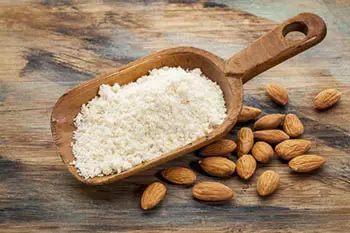

Almond flour is the most popular nut flour on the market, but you can feasibly make a nut flour with any nut and a food processor. Just don’t blend too much – you might get a nut butter, instead!
These are great alternatives, but they pack in a lot of energy due to the high fat content, so consume in moderation.
- Like grains, almond flour is better for you when the nuts are soaked and sprouted, so try preparing your nuts at home and grinding down the meal on your own instead of purchasing storebought.
- The high fat content inherently means this is a low-carb choice which is great for diabetics or those who follow a ketogenic diet. This also means quantity control is crucial.
- Almond flour is a good source of vitamin E which is fantastic for healthy skin.
Coconut flour


Coconut flour is a grain-free, low-carb wheat substitute that you can use to make bread. It’s allergen-free and versatile, though it can be fairly difficult to work with. The end result is often dense and cake-y which may suit some while turning off others.
- Just two tablespoons packs in 10-15 grams of fibre. This is unmatched in any other flour. Coconut flour is comprised of 75% fibre making it ideal for filling, digestion-friendly breads.
- Coconut doesn’t contain phytic acid which binds to minerals during digestion, and is a common problem in unsoaked/unsprouted grains. This makes it fairly easy to bake with without having to do much prep-work.
- It’s one of the least carb-heavy grain substitutions on the market. In conjunction with its high fibre content, it’s subsequently one of the least disruptive to glucose levels in the body.
So, what’s the verdict? What are your favourite flours to use when it comes to getting your bread fix? Gluten-free, grain-free or sprouted… where there is a will, there is a way.
Music, mountains, dogs, travel, food and friends.
